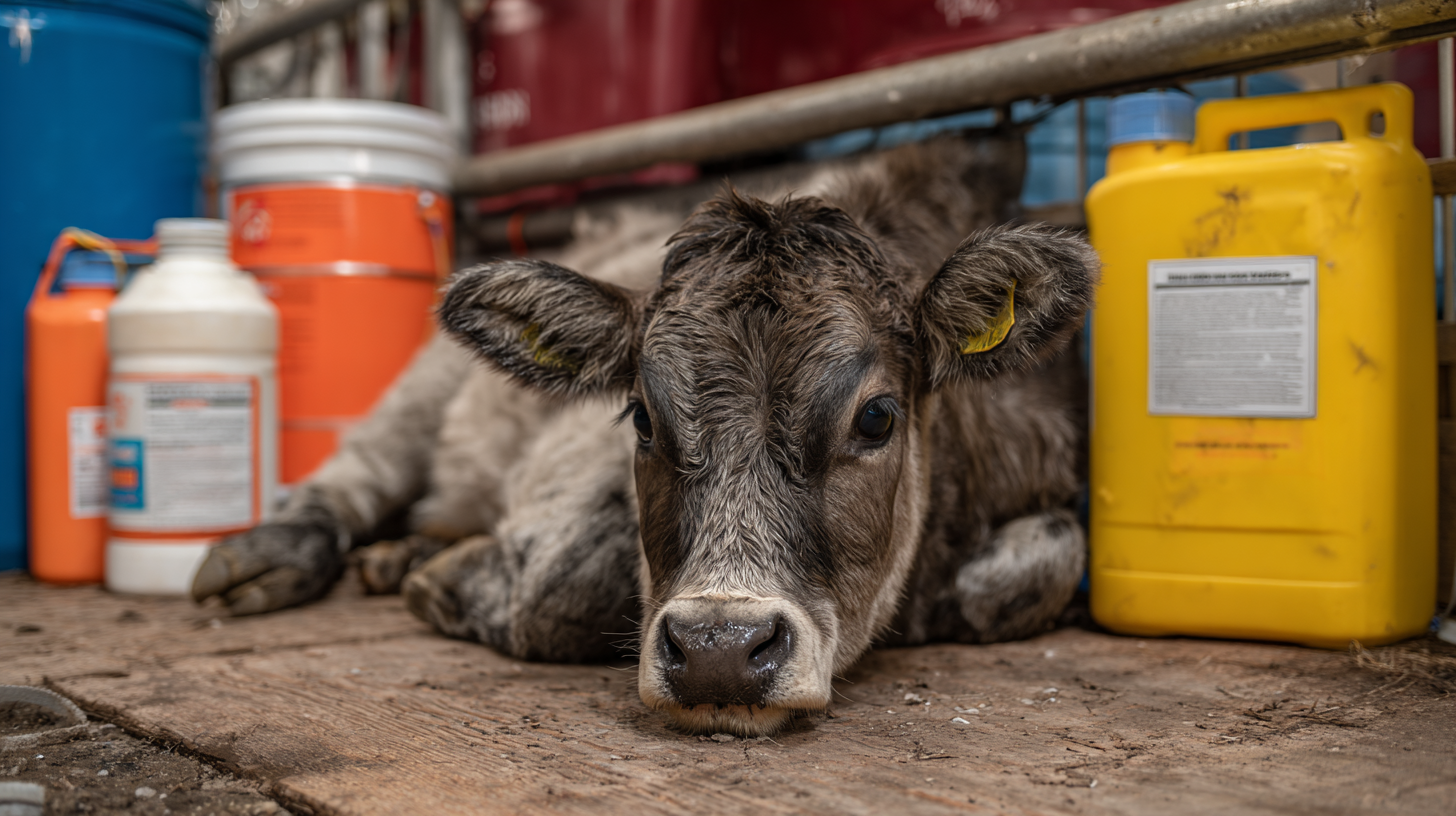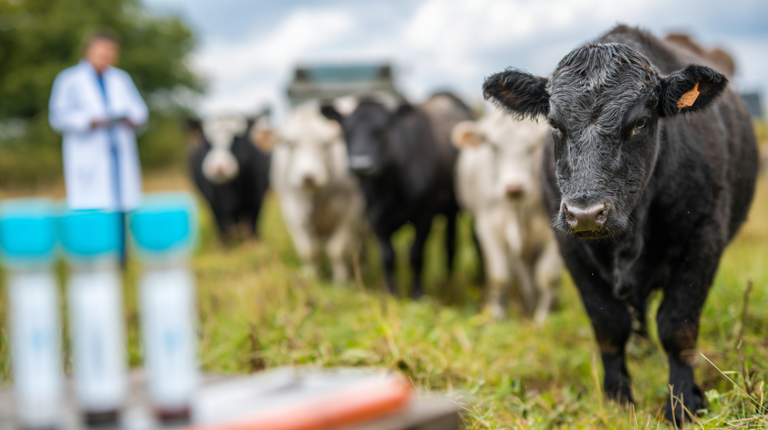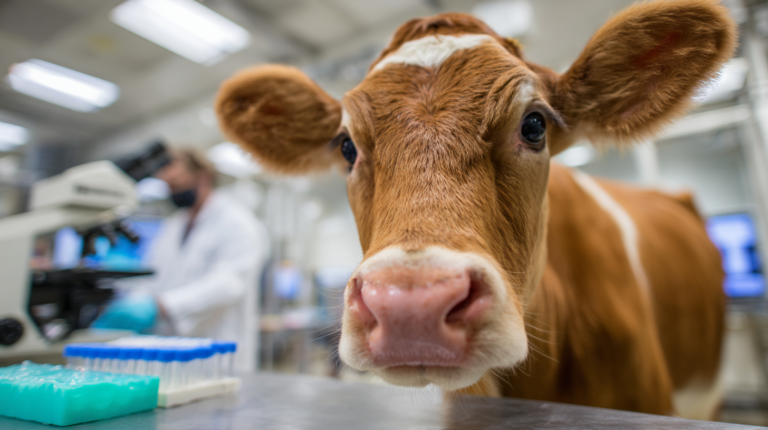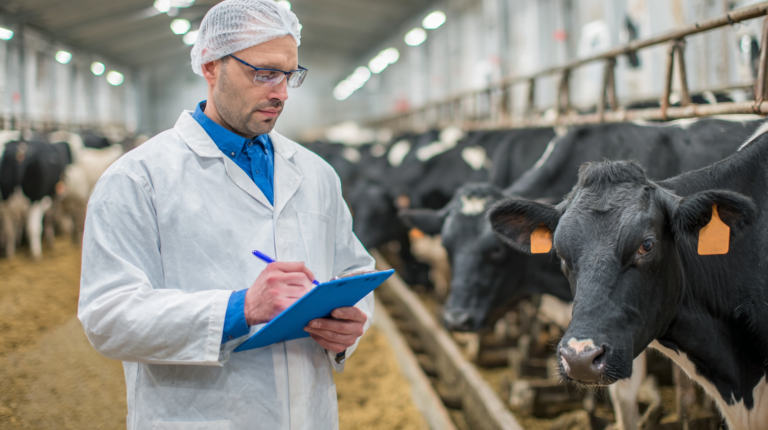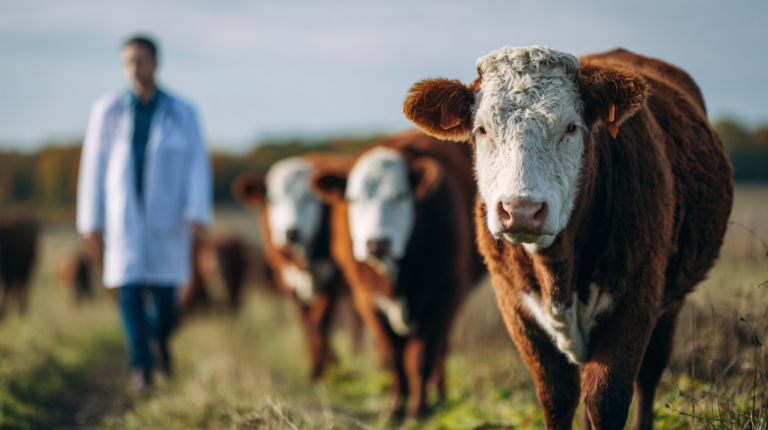Learn to identify chemical poisoning in cows with these 7 critical warning signs. Expert veterinary advice for livestock owners to protect their cattle from toxic exposure.
Table of Contents
Chemical poisoning in cows represents one of the most serious threats facing livestock owners today. Whether you’re managing a small family farm or overseeing a large commercial operation, understanding how to recognize the early warning signs of toxic exposure can mean the difference between life and death for your cattle. Chemical poisoning in cows occurs when animals ingest, inhale, or absorb harmful substances through their skin, leading to potentially fatal consequences if not addressed immediately.
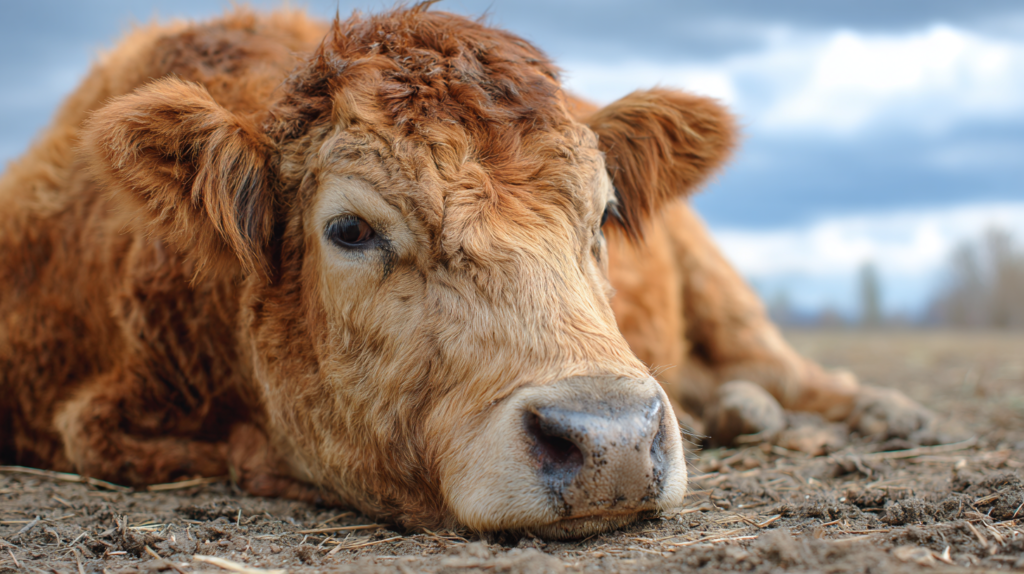
The agricultural landscape is filled with potential toxins, from pesticides and herbicides to heavy metals and industrial chemicals. Even seemingly harmless substances can become dangerous when cattle are exposed to them in sufficient quantities. According to the National Animal Poison Control Center, chemical poisoning cases in livestock have increased by 23% over the past decade, making early detection and rapid response more critical than ever.
This comprehensive guide will equip you with the knowledge to identify seven urgent signs of chemical poisoning in cows, understand the most common toxic substances, and take immediate action to protect your herd. Every minute counts when dealing with toxic exposure, and recognizing these warning signs could save your cattle’s lives.
| Warning Sign | Symptoms to Watch For | Urgency Level | Immediate Action Required |
|---|---|---|---|
| Neurological Symptoms | Seizures, tremors, loss of coordination, altered consciousness | 🔴 Critical | Contact veterinarian immediately |
| Respiratory Distress | Labored breathing, gasping, blue mucous membranes | 🔴 Critical | Ensure airway clearance, emergency vet call |
| Gastrointestinal Issues | Excessive drooling, vomiting, diarrhea, abdominal pain | 🟡 High | Remove from feed source, monitor closely |
| Cardiovascular Collapse | Irregular heartbeat, weak pulse, pale gums | 🔴 Critical | Emergency veterinary intervention needed |
| Urination Abnormalities | Blood in urine, excessive or no urination, dark colored urine | 🟡 High | Collect urine sample, veterinary consultation |
| Skin & Mucous Changes | Discoloration, burns, excessive salivation, eye irritation | 🟡 High | Rinse affected areas, avoid further exposure |
| Temperature Irregularities | Fever, hypothermia, inability to regulate body heat | 🟡 High | Monitor temperature, provide appropriate shelter |
Understanding Chemical Poisoning in Cattle
Chemical poisoning in cows occurs through multiple pathways, each presenting unique challenges for livestock owners. The digestive system serves as the primary route of exposure, as cattle naturally graze and explore their environment with their mouths. However, respiratory exposure through contaminated air or dust particles can be equally dangerous, particularly in confined feeding operations or areas with poor ventilation.
Dermal absorption represents another significant concern, especially when cattle come into contact with treated surfaces, contaminated water sources, or spilled chemicals. The large surface area of a cow’s skin, combined with their tendency to lie down in various locations, increases the risk of chemical absorption through the skin barrier.
The severity of chemical poisoning depends on several factors, including the type of chemical involved, the concentration of the substance, the duration of exposure, and the individual animal’s size, age, and overall health status. Young calves and pregnant cows are particularly vulnerable to toxic substances due to their developing systems and increased metabolic demands.
Dr. Sarah Mitchell, a veterinary toxicologist at the University of Wisconsin-Madison, explains: “Chemical poisoning in cattle often presents as a cascade of symptoms affecting multiple organ systems. The key to successful treatment lies in early recognition and immediate intervention, as many toxic substances can cause irreversible damage within hours of exposure.”
The 7 Critical Warning Signs of Chemical Poisoning in Cows
1. Sudden Onset of Neurological Symptoms
The nervous system often serves as the first indicator of chemical poisoning in cows, manifesting through a range of behavioral and physical changes that can appear within minutes to hours of exposure. Affected cattle may exhibit disorientation, stumbling, or an inability to coordinate their movements properly. You might notice your cow walking in circles, pressing their head against walls or fences, or displaying an unusual lack of response to familiar stimuli.
Seizures represent the most severe neurological manifestation of chemical poisoning and require immediate veterinary attention. These episodes can range from mild muscle twitching to violent convulsions that cause the animal to fall and thrash uncontrollably. Between seizure episodes, cattle may appear dazed, confused, or completely unresponsive to their surroundings.
Tremors and muscle fasciculations are common early signs that many farmers overlook or attribute to cold weather or stress. However, when these symptoms appear suddenly and affect multiple animals simultaneously, chemical poisoning should be strongly suspected. The tremors typically begin in the facial muscles and progress to involve the entire body, creating a characteristic “shaking” appearance that differs from normal shivering.
Changes in behavior can be subtle but significant. Cattle may become unusually aggressive or, conversely, extremely docile and withdrawn. Some animals may exhibit repetitive behaviors such as excessive licking of surfaces, constant head shaking, or compulsive walking patterns. These neurological signs often worsen rapidly, making early recognition crucial for successful treatment.
2. Respiratory Distress and Breathing Difficulties
Respiratory symptoms in chemical poisoning cases can develop rapidly and progress to life-threatening conditions within hours. Affected cattle often display labored breathing, characterized by increased respiratory rate, visible chest movement, and the use of abdominal muscles to assist with breathing. You may notice your cow’s nostrils flaring with each breath or observe a characteristic “pumping” motion of the flanks.
Coughing represents another significant respiratory sign, particularly when cattle have been exposed to airborne chemicals or have inhaled toxic substances. The cough may be dry and hacking initially, but can progress to produce frothy, discolored discharge. In severe cases, cattle may develop pulmonary edema, leading to pink or blood-tinged foam appearing at the nostrils.
Nasal discharge accompanying respiratory distress should be carefully evaluated for color, consistency, and odor. Chemical exposure often produces unusual discharge characteristics that differ from typical respiratory infections. The discharge may have a chemical odor, unusual color, or contain blood or abnormal particles.
Open-mouth breathing in cattle is always a serious concern, as these animals typically breathe through their nostrils. When chemical poisoning affects the respiratory system, cattle may resort to mouth breathing as their body attempts to compensate for reduced oxygen exchange. This sign often indicates advanced respiratory compromise requiring immediate veterinary intervention.
3. Gastrointestinal Disturbances and Digestive Issues
The digestive system frequently bears the brunt of chemical poisoning, particularly when cattle ingest contaminated feed, water, or vegetation. Profuse diarrhea often serves as one of the first visible signs, with affected animals producing loose, watery stools that may contain blood, mucus, or unusual colors depending on the chemical involved.
Excessive salivation, known as hypersalivation or drooling, commonly accompanies gastrointestinal poisoning. The saliva may appear frothy, discolored, or have an unusual odor. This symptom often develops alongside difficulty swallowing, creating a cycle where cattle cannot properly manage their saliva production.
Vomiting in cattle, while less common than in other species, can occur with certain types of chemical poisoning. When present, it typically indicates severe gastrointestinal irritation and often precedes more serious complications. The vomited material may contain food particles, bile, or in severe cases, blood.
Abdominal pain manifests in cattle through various behaviors including restlessness, frequent lying down and getting up, kicking at the belly, and assuming abnormal postures. Some animals may stand with their back arched or adopt a “sawhorse” stance with their legs spread wide. Loss of appetite and refusal to drink water often accompany these gastrointestinal signs, leading to rapid dehydration and electrolyte imbalances.
4. Cardiovascular System Collapse
Chemical poisoning can severely impact the cardiovascular system, leading to life-threatening complications that require immediate recognition and intervention. Changes in heart rate represent one of the most significant cardiovascular signs, with affected cattle experiencing either abnormally fast (tachycardia) or slow (bradycardia) heart rates depending on the specific chemical involved.
Weak pulse quality often accompanies heart rate changes, with the pulse feeling thready or difficult to detect. This sign typically indicates dropping blood pressure and cardiovascular compromise. You can assess pulse quality by feeling the artery under the cow’s jaw or inside the upper thigh, comparing the strength and regularity to normal cattle.
Mucous membrane color changes provide valuable information about cardiovascular status and oxygen delivery. Normal cattle should have pink, moist mucous membranes visible in the mouth and around the eyes. Chemical poisoning may cause these membranes to appear pale, blue (cyanotic), bright red, or yellow, each indicating different types of systemic compromise.
Sudden collapse or weakness may occur as the cardiovascular system fails to maintain adequate circulation. Affected cattle may appear unstable on their feet, sway while standing, or collapse suddenly without warning. This dramatic presentation often indicates advanced poisoning requiring emergency treatment.
5. Abnormal Urination and Kidney Function
The urinary system serves as a primary route for chemical elimination, making it particularly vulnerable to toxic damage. Changes in urination patterns often provide early warning signs of chemical poisoning in cows. Affected animals may produce unusually large or small amounts of urine, with the color, odor, and consistency varying significantly from normal.
Dark, bloody, or unusual-colored urine should always raise suspicion of chemical poisoning. The urine may appear brown, red, orange, or even green depending on the specific chemical involved and the degree of kidney damage. Some chemicals cause protein to appear in the urine, creating a foamy or bubbly appearance when the animal urinates.
Excessive thirst (polydipsia) followed by increased urination (polyuria) may indicate that the kidneys are attempting to flush toxic substances from the body. Conversely, some cattle may develop decreased urination or complete absence of urine production, indicating severe kidney damage or dehydration.
Straining to urinate or showing signs of pain during urination suggests irritation or damage to the urinary tract. Cattle may adopt abnormal postures while urinating, vocalize during the process, or make frequent attempts to urinate with little success. These signs often indicate that the chemical has caused inflammation or damage to the kidneys or bladder.
6. Skin and Mucous Membrane Changes
The skin and mucous membranes provide visible evidence of chemical exposure and systemic poisoning effects. Color changes in the skin, particularly around areas with less hair coverage such as the udder, inner thighs, and belly, can indicate various types of chemical poisoning. Pale skin may suggest anemia or blood loss, while yellow discoloration could indicate liver damage.
Excessive sweating or, conversely, completely dry skin may develop as the body’s temperature regulation system becomes compromised. The skin may feel abnormally hot or cold to the touch, and the hair coat may appear dull, dry, or begin falling out in patches. Some chemicals cause skin irritation, leading to redness, swelling, or the development of blisters or sores.
Mucous membrane changes extend beyond color alterations to include texture and moisture content. The membranes may become excessively dry, slimy, or develop a sticky quality. Some chemicals cause small hemorrhages to appear on the mucous membranes, creating a speckled or bruised appearance.
Swelling of the face, lips, or other body parts may indicate allergic reactions or direct chemical irritation. This swelling can develop rapidly and may interfere with breathing or eating if it affects the mouth or throat area. Any sudden swelling should be considered a medical emergency requiring immediate veterinary attention.
7. Temperature Regulation Abnormalities
Body temperature regulation becomes severely compromised during chemical poisoning, with affected cattle developing either hyperthermia (elevated body temperature) or hypothermia (low body temperature). Normal rectal temperature in cattle ranges from 101.5°F to 103.5°F (38.6°C to 39.7°C), and significant deviations from this range indicate serious systemic problems.
Hyperthermia may develop as the body’s metabolic processes become disrupted by toxic substances. Affected cattle may pant excessively, seek shade, or become restless and agitated. The skin may feel hot to the touch, and the animal may appear flushed or show increased redness in areas with less hair coverage.
Hypothermia can be equally dangerous, occurring when chemical poisoning depresses the central nervous system or interferes with normal metabolic processes. Cold cattle may shiver uncontrollably, seek warm areas, or appear sluggish and depressed. The skin may feel cold and clammy, and the animal’s extremities (ears, tail, feet) may become cool to the touch.
Temperature fluctuations, where the animal’s body temperature swings between high and low readings, indicate severe systemic compromise. These fluctuations often accompany other serious signs and suggest that the body’s regulatory mechanisms are failing. Monitoring body temperature regularly during suspected poisoning cases provides valuable information about the animal’s condition and response to treatment.
| Chemical Source | Common Examples | Risk Level | Prevention Method |
|---|---|---|---|
| Agricultural Pesticides | Organophosphates, carbamates, herbicides | Extreme | Secure storage, proper application timing |
| Industrial Chemicals | Lead paint, petroleum products, antifreeze | Extreme | Restrict pasture access near industrial areas |
| Contaminated Water | Heavy metals, runoff chemicals, algae toxins | High | Regular water testing, alternative sources |
| Feed Additives | Excessive minerals, moldy feed, urea overdose | High | Quality feed sourcing, proper storage |
| Cleaning Products | Disinfectants, detergents, sanitizers | Moderate | Secure storage, thorough rinsing after use |
| Poisonous Plants | Nightshade, oleander, jimsonweed | High | Pasture management, plant identification |
| Vehicle Fluids | Motor oil, brake fluid, coolant | High | Proper disposal, equipment maintenance |
Common Sources of Chemical Poisoning in Cattle
Understanding the most frequent sources of chemical exposure helps livestock owners implement effective prevention strategies and respond quickly when poisoning occurs. Agricultural chemicals represent the largest category of toxic substances affecting cattle, with pesticides, herbicides, and fertilizers topping the list of dangerous compounds.
Organophosphate and carbamate insecticides pose particular risks to cattle, as these compounds are designed to disrupt nervous system function in target pests. When cattle are exposed to these chemicals through treated pastures, contaminated water sources, or improperly stored products, they can develop severe neurological symptoms within hours.
Herbicides such as 2,4-D and glyphosate, while generally less toxic than insecticides, can still cause serious problems when cattle consume treated vegetation or drink contaminated water. The timing of exposure relative to chemical application is crucial, as many herbicides require specific withholding periods before livestock can safely graze treated areas.
Heavy metals including lead, mercury, and arsenic continue to cause poisoning cases, particularly in areas with industrial activity or older farm buildings containing lead-based paint. These substances accumulate in the body over time, often causing chronic poisoning that may be more difficult to recognize than acute exposure cases.
Rodenticides and other pest control products pose ongoing risks, especially when cattle have access to bait stations or treated areas. Anticoagulant rodenticides can cause internal bleeding and death even when consumed in small quantities over time.
Immediate Response and Emergency Actions
When chemical poisoning is suspected, immediate action can save lives and prevent permanent damage. The first priority is to remove the animal from the source of exposure and prevent further contact with the toxic substance. This may involve moving cattle to a clean pasture, providing fresh water, or removing contaminated feed sources.
Contact your veterinarian immediately, even if symptoms appear mild initially. Chemical poisoning can progress rapidly, and early intervention significantly improves treatment outcomes. When calling, provide specific information about the suspected chemical, the time of exposure, the number of animals affected, and the symptoms observed.
While waiting for veterinary assistance, document everything you observe. Take photos of affected animals, collect samples of suspected toxic substances, and record the timeline of events. This information helps veterinarians make accurate diagnoses and select appropriate treatments.
Never attempt to induce vomiting unless specifically instructed by a veterinarian, as some chemicals can cause additional damage when vomited. Similarly, avoid giving any medications or home remedies without professional guidance, as these interventions may interfere with proper treatment or worsen the condition.
| Time Phase | Diagnostic Actions | Treatment Interventions | Expected Outcomes |
|---|---|---|---|
| 0-30 Minutes | Visual assessment, vital signs check, exposure history | Remove from source, decontamination, oxygen support | Stabilization of breathing, reduced absorption |
| 30-60 Minutes | Blood samples, neurological exam, cardiovascular monitoring | IV fluids, specific antidotes, activated charcoal | Improved circulation, toxin binding |
| 1-2 Hours | Laboratory results, organ function tests, imaging if needed | Supportive care, medication adjustments, monitoring | Symptom management, prevented deterioration |
| 2-6 Hours | Follow-up bloodwork, urine analysis, response evaluation | Continued IV therapy, organ support, pain management | Clinical improvement, stable vital signs |
| 6-24 Hours | Comprehensive health assessment, recovery monitoring | Gradual treatment reduction, nutritional support | Return of normal behaviors, appetite recovery |
| 1-3 Days | Organ function recheck, long-term damage assessment | Transition to oral medications, environmental management | Full mobility restoration, normal physiological functions |
| 1-4 Weeks | Complete health evaluation, reproductive function check | Nutritional rehabilitation, gradual activity increase | Complete recovery or permanent damage assessment |
| 1-6 Months | Long-term monitoring, productivity assessment | Ongoing supportive care if needed, prevention planning | Return to full productivity or adapted management |
Prevention Strategies and Best Practices
Preventing chemical poisoning requires a comprehensive approach that addresses storage, application, and monitoring practices. Proper chemical storage in locked, well-ventilated areas away from feed and water sources prevents accidental exposure. All chemical containers should be clearly labeled and stored according to manufacturer recommendations.
Regular pasture management includes monitoring for chemical applications on neighboring properties, testing water sources for contamination, and maintaining proper buffer zones between treated areas and grazing cattle. Communication with neighboring farms about chemical applications helps prevent accidental exposure through drift or runoff.
Staff training ensures that all personnel understand proper chemical handling procedures, recognize early signs of poisoning, and know how to respond to emergencies. Regular training updates keep everyone informed about new chemicals and changing safety recommendations.
Environmental monitoring through periodic testing of soil, water, and feed sources helps identify potential contamination before it affects cattle. This proactive approach allows for corrective action before animals are exposed to dangerous levels of toxic substances.
Treatment Approaches and Recovery
Treatment of chemical poisoning in cattle depends on the specific substance involved, the severity of exposure, and the time elapsed since contact. Veterinary intervention typically focuses on decontamination, supportive care, and specific antidotes when available.
Decontamination procedures may include washing external surfaces with appropriate solutions, administering activated charcoal to absorb ingested chemicals, or providing specific binding agents that neutralize particular toxins. The choice of decontamination method depends on the route of exposure and the chemical properties of the substance involved.
Supportive care addresses the various organ systems affected by chemical poisoning. This may include intravenous fluids to maintain hydration and electrolyte balance, oxygen therapy for respiratory distress, medications to control seizures or cardiac arrhythmias, and nutritional support during recovery.
Specific antidotes exist for certain chemicals, such as atropine for organophosphate poisoning or chelation therapy for heavy metal exposure. These treatments work best when administered early in the poisoning process, emphasizing the importance of rapid recognition and veterinary intervention.
Recovery monitoring involves regular assessment of vital signs, laboratory testing to evaluate organ function, and gradual return to normal feeding and activity levels. Some cattle may require extended supportive care, while others recover relatively quickly with appropriate treatment.
This infographic would display each of the seven warning signs with simple, clear illustrations showing affected cattle and key symptoms to watch for. The visual would include emergency contact information and basic first aid steps, making it suitable for posting in barns or farm offices as a quick reference guide.
Long-term Health Implications
Chemical poisoning can have lasting effects on cattle health, even after successful initial treatment. Neurological damage from certain chemicals may result in permanent behavioral changes, coordination problems, or increased susceptibility to stress. These long-term effects can impact the animal’s productivity, reproduction, and overall quality of life.
Liver and kidney damage from chemical exposure may lead to chronic organ dysfunction, requiring ongoing monitoring and management. Affected cattle may need modified diets, regular veterinary check-ups, and careful monitoring of drug metabolism and elimination.
Reproductive effects of chemical poisoning can include decreased fertility, increased embryonic loss, and birth defects in offspring. These impacts may not become apparent for months or years after exposure, making long-term monitoring essential for breeding animals.
Immune system suppression following chemical poisoning can increase susceptibility to infectious diseases, parasites, and other health challenges. Affected cattle may require modified vaccination schedules, enhanced biosecurity measures, and closer health monitoring.
Frequently Asked Questions
Everything you need to know about chemical poisoning in cattle
No questions found matching your search. Try different keywords or browse all questions.
For more expert pet care tips and product recommendations, visit BlithePet.com — your trusted source for pet wellness.
Conclusion
Chemical poisoning in cows represents a serious threat that requires immediate recognition and response from livestock owners. The seven critical warning signs outlined in this guide—neurological symptoms, respiratory distress, gastrointestinal disturbances, cardiovascular collapse, abnormal urination, skin changes, and temperature regulation problems—can help you identify potentially life-threatening situations before they become fatal.
Early detection and prompt veterinary intervention remain the most important factors in successful treatment outcomes. By understanding these warning signs, implementing proper prevention strategies, and maintaining open communication with your veterinary team, you can protect your cattle from the devastating effects of chemical poisoning.
Remember that prevention is always preferable to treatment. Regular monitoring of your environment, proper chemical storage and handling, and ongoing education about potential hazards will help keep your herd safe from toxic exposures. When in doubt, always err on the side of caution and contact your veterinarian immediately.
The investment in prevention and early detection pays dividends in animal welfare, economic stability, and peace of mind. Your cattle depend on your vigilance and quick action when chemical poisoning threatens their health and lives.
Have a similar experience with your pet? Share it in the comments below!

